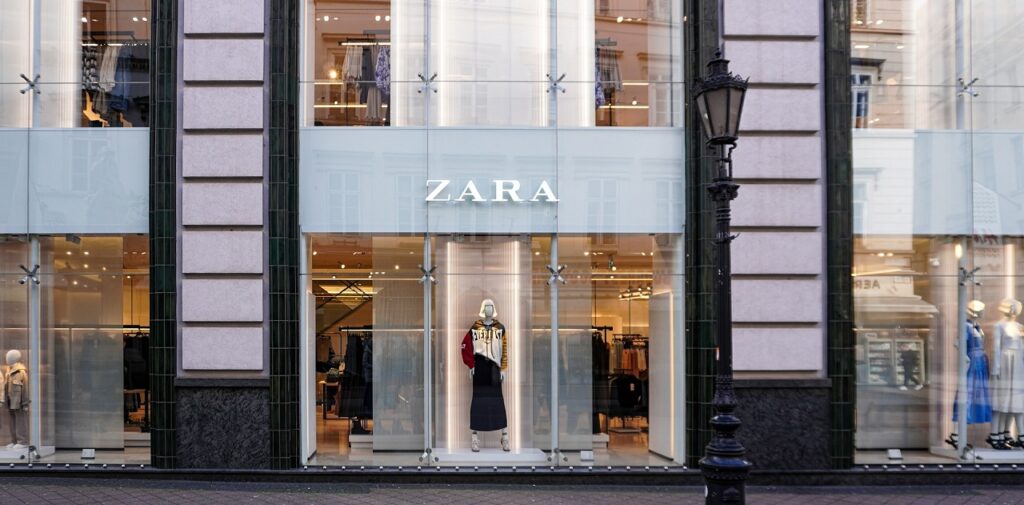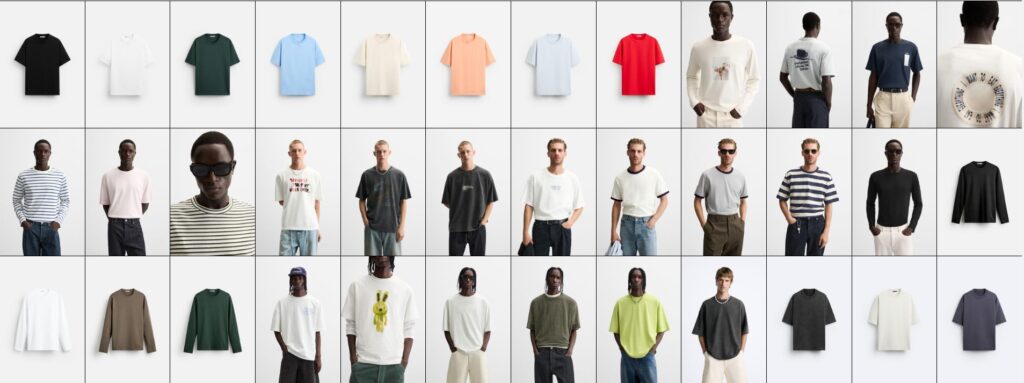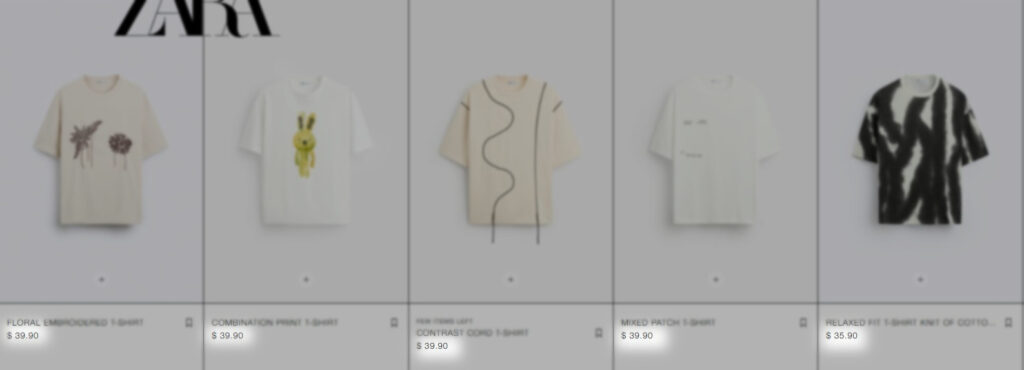Ever walked into Zara, spotted a t-shirt you love, then winced at the price tag? Yeah, we’ve all been there. But before you put it back on the rack, let’s take a closer look.
What makes Zara’s tees pricier than those at H&M or Bershka?
Is it just a clever marketing trick, or is there something more behind those extra bucks?
Spoiler alert: It’s not just about the shirt; it’s about the whole experience, the brand’s unique strategy, and yes, a bit of magic that keeps us coming back for more.
1. Quality and Production Strategy
Zara isn’t just about churning out clothes at lightning speed; they’re also focused on quality. Unlike some of its competitors, Zara produces about half of its trendy items in Spain and nearby countries. What does this mean for you?
Better craftsmanship and more control over the production process. Compare that to brands like H&M, which often rely on cheaper production in Asia. This means Zara can offer higher-quality items, which naturally come with a higher price tag. It’s the difference between a shirt that lasts you a few months and one that stays in your wardrobe for years.
2. Fast Fashion with a Twist

Everyone knows Zara is a master of fast fashion, but what makes them stand out is their speed. They’re not just fast—they’re lightning fast. Zara can take a design from the runway to the rack in a matter of weeks. This quick turnaround creates a sense of urgency: if you see something you like, you better grab it, because it might not be there tomorrow. This strategy allows Zara to keep prices high because their items are always fresh, on-trend, and—most importantly—limited.
3. Brand Positioning and Marketing
Zara has mastered the art of positioning itself as a more upscale option within the fast-fashion realm. They don’t spend much on traditional advertising, relying instead on prime store locations and a strong brand image. Walk into a Zara store, and you’ll notice the sleek design, the carefully curated displays, and the overall vibe that screams “premium.” This isn’t by accident. Zara knows that creating an elevated shopping experience allows them to justify higher prices. It’s a classic case of “you get what you pay for.”
4. Limited Stock Equals High Demand

Zara’s “here today, gone tomorrow” approach doesn’t just create urgency—it also creates exclusivity. By producing limited quantities of each item, Zara ensures that their products remain desirable. When customers know that a t-shirt might be sold out the next time they visit, they’re more likely to buy it now, even if it’s a bit pricier.
This scarcity strategy contrasts with other brands that flood the market with endless stock, making their items feel less special.
5. Quick on the Uptake
One of Zara’s biggest strengths is its ability to stay ahead of the curve. They’re constantly analyzing data to figure out what’s trending and what’s not. This allows them to adapt quickly and keep their offerings fresh and relevant. When you buy from Zara, you’re not just buying a t-shirt; you’re buying into the latest fashion wave. And for that, consumers are often willing to pay a little more.
6. Regional Pricing Strategies
Ever noticed how Zara’s prices vary depending on where you are? That’s no accident. Zara tailors its prices to fit the local market. In regions where consumers expect premium quality, Zara prices its items higher to match that expectation. This flexibility means they can maintain a balance between being accessible and being perceived as high-end. So while you might pay more for a Zara t-shirt in one country compared to another, it’s all part of their strategy to align with local consumer behaviors and economic conditions.
7. How Much Does an Average T-Shirt Cost at Zara?

When you browse through Zara’s men’s t-shirts, you’ll notice a consistent theme in pricing. Most of the printed tees, which are a staple in any trendy wardrobe, are tagged at $39.90. That’s the sweet spot Zara seems to have settled on, offering just the right mix of style and affordability.
If you’re looking for something more basic, like a heavyweight t-shirt, you can snag one for $29.90, which feels like a decent deal considering Zara’s reputation for quality. On the flip side, if you’re eyeing something a bit more unique – say, a zippered t-shirt or a stylish tank – you’re still looking at $39.90. This price consistency reinforces Zara’s brand image: it’s fashion-forward, but still within reach, making it a go-to for those who want to look good without breaking the bank.
Ultimately, the higher price you pay for a Zara t-shirt isn’t just about the shirt itself – it’s about everything that comes with it. You’re paying for quality, yes, but you’re also paying for the brand experience, the quick access to the latest trends, and the knowledge that what you’re buying is a limited commodity. It’s a carefully crafted mix of factors that make Zara stand out in the crowded fast-fashion market.
8. A Sustainable Edge
Another factor that might not be immediately obvious is Zara’s commitment to sustainability. While it’s not their main selling point, Zara has made strides in reducing its environmental impact. They’re working on sourcing more sustainable materials and improving their supply chain’s eco-friendliness. This focus on sustainability might not be as aggressive as some other brands, but it does contribute to the overall value perception of Zara products. And for consumers who care about the planet, that’s worth paying a little extra.
Conclusion: Is It Worth It?
So, is a Zara t-shirt worth the extra bucks? If you value quality, exclusivity, and staying on the cutting edge of fashion, the answer is probably yes. Zara has carefully crafted a brand that offers more than just clothing—it offers an experience, a sense of being in the know, and a product that feels a little more special than what you’ll find at other fast-fashion retailers. Sure, you’re paying more, but you’re also getting more. And in the world of fashion, that’s often a trade-off worth making.
In the end, Zara’s higher prices reflect a combination of factors that contribute to its premium positioning in the fast-fashion market. From quality and production strategies to brand positioning and responsiveness to trends, Zara has created a unique value proposition that resonates with consumers who are willing to pay a little extra for something that feels exclusive and on-trend. So the next time you find yourself eyeing a Zara t-shirt, remember: you’re not just buying a piece of clothing—you’re buying into a brand experience that’s been meticulously crafted to offer more than meets the eye.

